Host genetics maps to behaviour and brain structure in developmental mice
- PMID: 39748372
- PMCID: PMC11697848
- DOI: 10.1186/s12993-024-00261-y
Host genetics maps to behaviour and brain structure in developmental mice
Abstract
Gene-environment interactions in the postnatal period have a long-term impact on neurodevelopment. To effectively assess neurodevelopment in the mouse, we developed a behavioural pipeline that incorporates several validated behavioural tests to measure translationally relevant milestones of behaviour in mice. The behavioral phenotype of 1060 wild type and genetically-modified mice was examined followed by structural brain imaging at 4 weeks of age. The influence of genetics, sex, and early life stress on behaviour and neuroanatomy was determined using traditional statistical and machine learning methods. Analytical results demonstrated that neuroanatomical diversity was primarily associated with genotype whereas behavioural phenotypic diversity was observed to be more susceptible to gene-environment variation. We describe a standardized mouse phenotyping pipeline, termed the Developmental Behavioural Milestones (DBM) Pipeline released alongside the 1000 Mouse Developmental Behavioural Milestones (1000 Mouse DBM) database to institute a novel framework for reproducible interventional neuroscience research.
Keywords: Early life stress; Machine learning; Neurodevelopment; Random forest; Structural MRI.
© 2024. The Author(s).
Conflict of interest statement
Declarations. Ethics approval and consent to participate: All experimental procedures were approved by the Animal Research Ethics Board, McMaster University in accordance with the guidelines of the Canadian Council on Animal Care. Consent for publication: Not applicable. Competing interests: JAF serves on the Scientific Advisory Board for MRM Health NL and has received consulting/speaker fees from Alphasights, Novozymes, Klaire Labs, Takeda Canada, Rothman, Benson, Hedges Inc, and WebMD. All other authors have no conflicts to report.
Figures

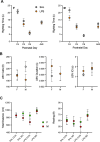
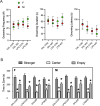
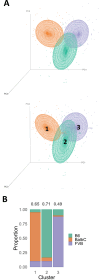
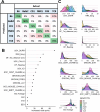
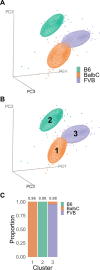
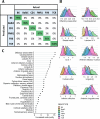

Similar articles
-
Early-life stress impairs developmental programming in Cadherin 13 (CDH13)-deficient mice.Prog Neuropsychopharmacol Biol Psychiatry. 2019 Mar 8;89:158-168. doi: 10.1016/j.pnpbp.2018.08.010. Epub 2018 Aug 28. Prog Neuropsychopharmacol Biol Psychiatry. 2019. PMID: 30165120
-
Behavioural phenotyping of transgenic mice.Can J Exp Psychol. 2007 Dec;61(4):328-44. doi: 10.1037/cjep2007033. Can J Exp Psychol. 2007. PMID: 18266509 Review.
-
Deep behavioural phenotyping of the Q175 Huntington disease mouse model: effects of age, sex, and weight.BMC Biol. 2024 May 23;22(1):121. doi: 10.1186/s12915-024-01919-9. BMC Biol. 2024. PMID: 38783261 Free PMC article.
-
Early-in-life neuroanatomical and behavioural trajectories in a triple transgenic model of Alzheimer's disease.Brain Struct Funct. 2018 Sep;223(7):3365-3382. doi: 10.1007/s00429-018-1691-4. Epub 2018 Jun 13. Brain Struct Funct. 2018. PMID: 29948190
-
Genetics of behavioural domains across the neuropsychiatric spectrum; of mice and men.Mol Psychiatry. 2007 Apr;12(4):324-30. doi: 10.1038/sj.mp.4001979. Epub 2006 Nov 21. Mol Psychiatry. 2007. PMID: 17389901 Review.
References
-
- Foster JA, MacQueen G: Neurobiological factors linking personality traits and major depression. Can J Psychiatry 2008, 53(1):6–13. - PubMed
-
- Belay H, Burton CL, Lovic V, Meaney MJ, Sokolowski M, Fleming AS: Early adversity and serotonin transporter genotype interact with hippocampal glucocorticoid receptor mRNA expression, corticosterone, and behavior in adult male rats. Behav Neurosci 2011, 125(2):150–160. - PubMed
-
- Fox WM. Reflex-ontogeny and behavioural development of the mouse. Anim Behav. 1965;13(2):234–41. - PubMed
-
- Hill JM, Lim MA, Stone MM. Developmental milestones in the newborn mouse. In: Gozes I, editor. Neuropeptide techniques. Totowa, NJ: Humana Press; 2008. p. 131–49. 10.1007/978-1-60327-099-1_10.
MeSH terms
Grants and funding
LinkOut - more resources
Full Text Sources

